Chris Grinter, 19. aprila, 2011
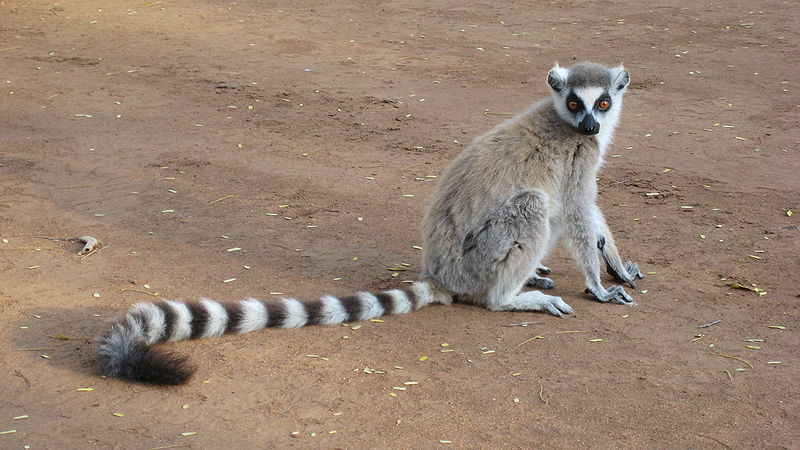 Vir: Wikipedia Izkazalo se je, da ima Richard Branson novo idejo; rešiti obročastega lemurja (Lemur catta) z importing them to his private British Virgin Island. Kot poudarja članek, je Branson porabil milijone funtov in let truda, da bi spremenil otok “the most ecologically friendly island in the world”. But it appears Mr Branson has decided to forgo conservation science and rewrite it in a more PR friendly way. In come the lemurs despite the cautions of his own ecological assessment because he wants “…to create a second island habitat and the conditions on Moskito are perfect.” Perhaps Branson has a bizarro world dictionary where the definition of the word perfect is “something completely dissimilar from the original”.
OK sure, at first the idea sounds like a fine one – the lemurs are endangered, why not try to give them a second wild refuge? Dobro, Dr James Lazell of the Conservation Agency has had 31 years experience in the Virgin Islands and has pointed out that “Lemurs are agile, dexterous, aggressive, omnivorous animals that could have a detrimental effect on these simple island ecologies. They eat absolutely everything – lizards, fruit, roots, žuželke, birds’ eggs.” Oh but don’t worry, nothing bad can happen when you introduce primates to an island (introduced primates devastate Florida Key). Branson knows that the lemurs will only “take the odd gecko” (like the rare endemic dwarf-gecko Sphaerodactylus parthenopion), not to mention they probably won’t spread to other islands since they “hate swimming” (ring tailed lemur swimming).
So why then the ring-tailed? Not because it is the most endangered (obstajajo lots of other more endangered lemurs), but because it is the most iconic. That is what really drives me up the wall about this ridiculous idea. Not only is he naively introducing a possibly invasive species into a sensitive island habitat – but because he is spreading a false message of conservation. Like a slow child Branson has rushed to the ring-tailed to save it while completely missing the entire idea behind conservation. The ring-tailed is a flagship species, one that draws attention to the devastation that is occurring in Madagascar. One cute cuddly animal to represent the staggeringly unique and diverse habitats of its homeland. But not if Richard Branson has anything to say about it. Why bother protect Madagascar when you can swoop in and create a new home for a primate everyone loves? Fuj, crisis averted. Richard fiddles while Madagascar burns.
I suspect this freakish island zoo is simply masquerading as conservation and the real incentive behind it is commercial. Over the next few years there will be a handful of “luxury, carbon-neutral homes built on the island”. A pretty brilliant scheme to incentivize the purchase of homes that undoubtedly will cost tens of millions of dollars each – and you can pretend to feel good about protecting the world while you do it. After all the Virgin Islands lack any charismatic wildlife; nature sure does a terrible job of creating a billionaires wonderland. What comes next to the island?
Maybe… just maybe… Branson has Dr. Moreau moving in first.
Chris Grinter, na 18. april, 2011 Pred nekaj tedni sem bil povabljen, da se pridružijo Berkeley entomologijo razred v polju za vikend. Our destination was the Modra Hrast Ranch Reserve; ena od najnovejših rezerv v sistemu Univerze v Kaliforniji, ki se nahajajo tik izven San Jose na gori Hamilton (zemljevid spodaj). It was a joint spider and beetle class trip, hosted by Charles Griswold in Dave Kavanaugh respectively. And despite a frost on Saturday night we managed to find some interesting insects. You’ve already seen my images of the Scaphinotus (Carabidae), but here is a larger set of images from both myself and colleague and fellow blogger Tamas Szuts.
 Staphylinidae: Aleocharinae?  Pholcidae : likely Pholcus sp. 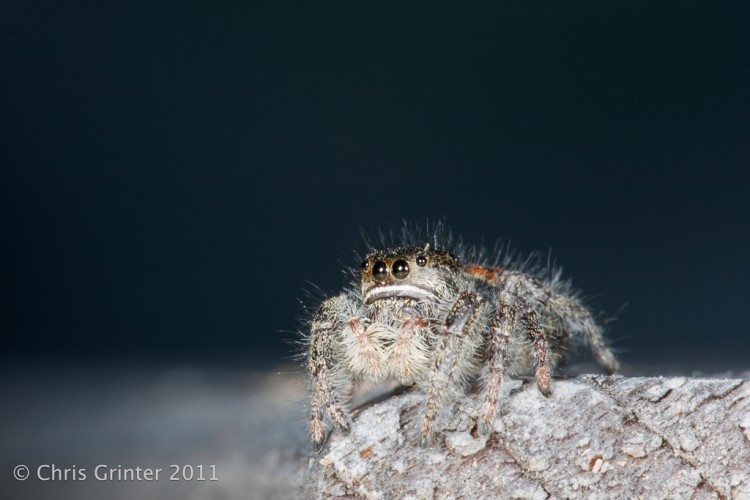 Salticidae: Phidippus sp. Continue reading Blue Oak Ranch Reserve
Chris Grinter, 6. aprila, 2011 v redu – a few apologies for not having full images *yet* of the larvae in question (I will in a few days!). Over the weekend I was out with a group of Berkeley students on Mount Hamilton and PhD candidate Meghan Culpepper collected a few species of Scaphinotus and a some larvae! So the specimen from Monday was indeed the larvae of a Scaphinotus beetle feasting inside the shell of a native terrestrial snail. This challenge was a hard one since these predatory Scaphinotus larvae are rarely encountered and there are zero images of out there – and none of them feeding. Better luck next time!
For now, here is an undetermined Scaphinotus species. In the coming weeks I will have 4-5 species photographed and identified (by Meghan) – and the larvae will have to be sequenced for species ID. Stay tuned.
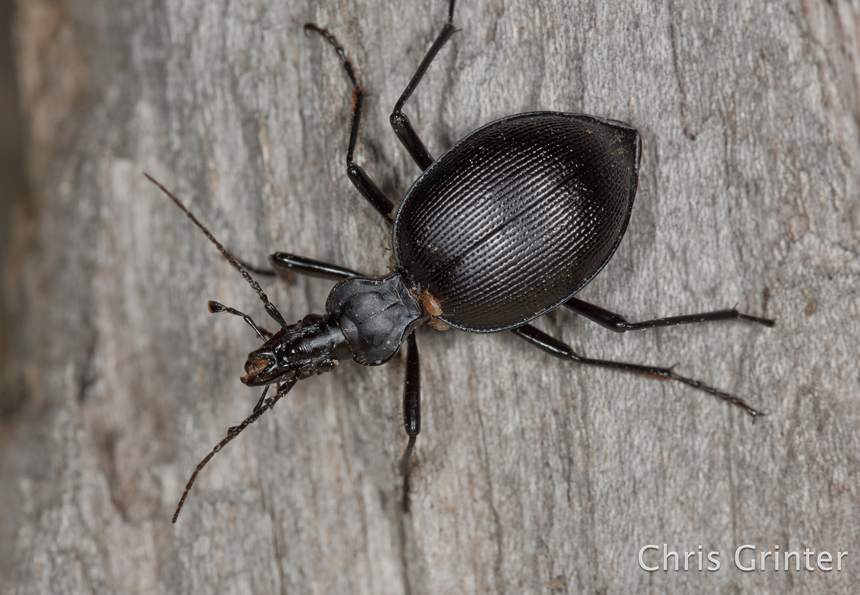

Chris Grinter, on April 4th, 2011 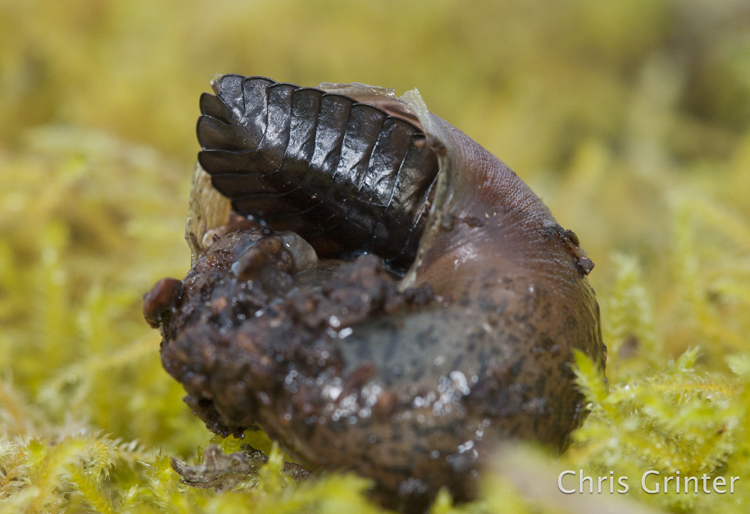
Came across this guy while out in the field the other day, what’s going on here? Points awarded for Order/Family/Genus – but even experts in this group can’t figure out the species quite yet.
(everyone in the field with me should hold their comments until the guesses come in!)
Chris Grinter, on March 30th, 2011 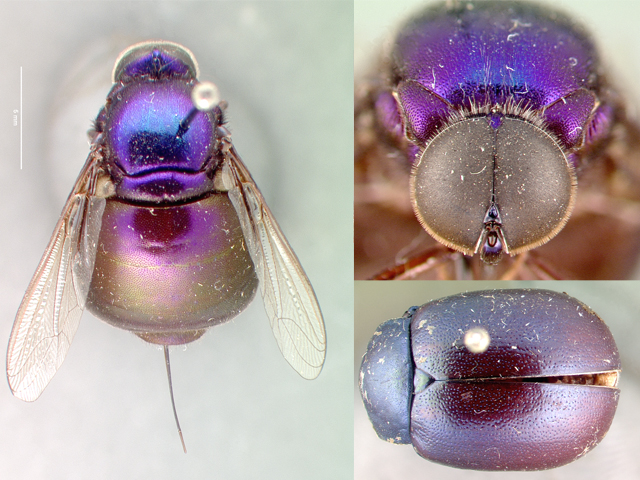 Kozarec kozarca: Fotografije April Nobile, Cas Kozarec kozarca: Fotografije April Nobile, Cas
Večinoma muhe niso žuželka, nad katero se preveč navdušujem. Vendar, Izjema je enigmatična družinska acroceridae. Občasno bom začel deliti nekaj zanimivih rodov – Morfologija družine je neverjetno raznolika. Večino mojih dni preživim v muzejskem inventarju in naša množična zbirka 16,000 Akorceridi (aka majhne muhe). To morda ne zveni vse preveč impresivno, če ga primerjate z drugimi bolj obilnimi družinami (in v primerjavi s čezmej 17,500,000 drugi vzorci, ki jih imamo v muzeju); Toda izkazalo se je, da predstavlja veliko, Če ne večina, od vse znani primerki za vso družino. Medtem ko obstajajo verjetno veliki sklopi teh muh v drugih institucijah, Kalifornijska akademija znanosti zlahka zahteva rekord, odkar je prejela zbirko DR. EVERT I.. Schlinger (ki občasno pride v službo iz muzeja).
Acroceridi se izkažejo za precej težka skupina, ki jo je treba preučiti zaradi tega, kako redki so v naravi, njihova parazitoidna biologija, in kako težko jih je ujeti na krilo. Njihov velik prsni koš je poln mišic, ki raketirajo lete po zraku – Torej, če jih ne ujamete na roži, ostanete hrepenenje po slabi. Ev mi je povedal eno zgodbo o učenju, da jih ujamem na krilo v Kostariki. Stojiš navzdol od kolega na terenu – Takoj, ko nekdo sliši nekaj zadrge mimo, divje zamahnete v upanju, da boste po naključju zaskočili letenje… Vsake toliko deluje. Te muhe so tudi edini znani endoparaziti pajkov za odrasle (Morda je zapis tahinida…). Zgornji rod, NeoKozarec, je parazit terafosidnih tarantul (nekaj takega Aphonopelma). Kot ličinke muha deluje po nogah pajka in se vpelje v trebuh, kjer se nato usede zraven knjige pljuča in pokuka malo dihalne luknje. Potem potrpežljivo čaka, da pajek skoraj zrelo. Z ženskami tarantulami, muha bi lahko bila mirujoča desetletja. Sčasoma se zgodi nekaj podobnega filmu in ličinke se prehranjujejo z notranjimi organi pajka. Toda ugotovitev, ali ima pajek ali ne, je nemogoče brez disekcije – Tako je treba vzdrževati velike zbirke pajkov v živo, da pridobijo zapise gostiteljev. Parazitoidna biologija je prav tako kul.
Zgornji vzorec (Kozarec kozarca nov, neimenovan, vrste) je bilo zbrano v 1977 avtor Schlinger v bližini mesta Alamos, Mehika – na rožah z verjetno modelom mimičnega modela, Chrysomelidae hrošč (ljudje hrošča, kakršne koli ideje, ki presegajo družino?).
Chris Grinter, 24. marca, 2011 Better be careful of what you do while out in the countryside. Kmetije so lahko nevarna mesta, še posebej, če ste fotograf. Predlagana zakonodaja na Floridi, z naslovom preprosto “kmetije”, je poskus, da bi fotografije ali risbe v, on or od a farm without explicit written consent a first degree FELONY (do 30 years in prison). What could possibly be the justification for this legislation? Journalist Barry Doyle suggests the good Senator is tightly in the pockets of Agribusiness – looking out for those poor farmers who are targeted by animal rights groups or even worse – human rights groups! I tend to concur, this legislation is a disgusting piece of corruption. It gets pretty bad:
(2) A person who photographs, video records, or otherwise produces images or pictorial records, digital or otherwise, at or of a farm or other property where legitimate agriculture operations are being conducted without the written consent of the owner, or an authorized representative of the owner, commits a felony of the first degree…
I strongly encourage any of my Florida readers to write to Senator Norman and express your absolute disgust in his legislation.
14031 N. Dale Mabry Blvd.
Tampa, FL 33618
(813) 265-6260
Senate VOIP: 41200
I also encourage everyone else everywhere else to write to your US representative and exclaim your outrage over this possible violation of first amendment rights (only a proposed violation at this moment).
And just for good measure, here is a bad cellphone picture I took while in Oregon with lots of farms.
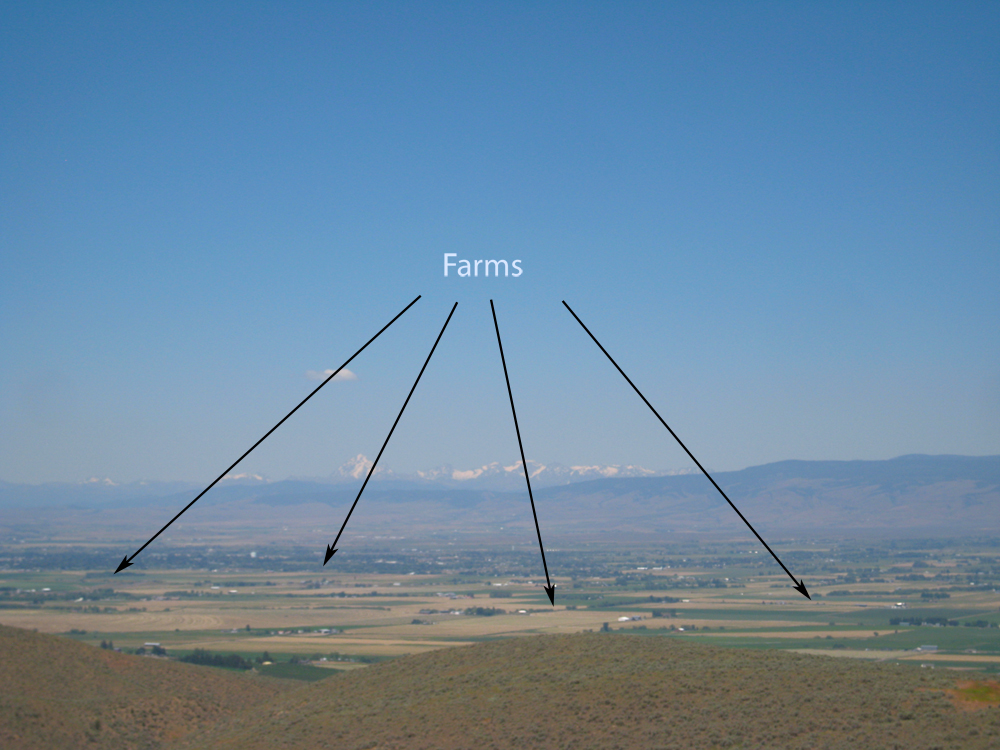
Chris Grinter, on March 22nd, 2011 Usually I come across horrible entomology articles regularly enough that I save a backlog for future series. This hasn’t been the case over the last few weeks, I haven’t come across the normal array of terrible media crud. Maybe I just get jaded and stop looking as carefully – but this week I even came across a moth related correction from the Maui News. They fixed their error, but must have deleted the original article…
And for this week I found Ta članek with the image below. Should be pretty easy to spot the weirdness (they do at least manage to point out that the moth is ne the LBAM (light brown apple moth)).
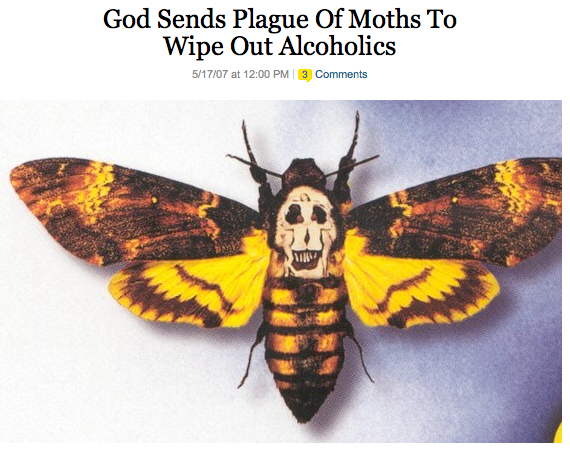
Chris Grinter, 18. marca, 2011 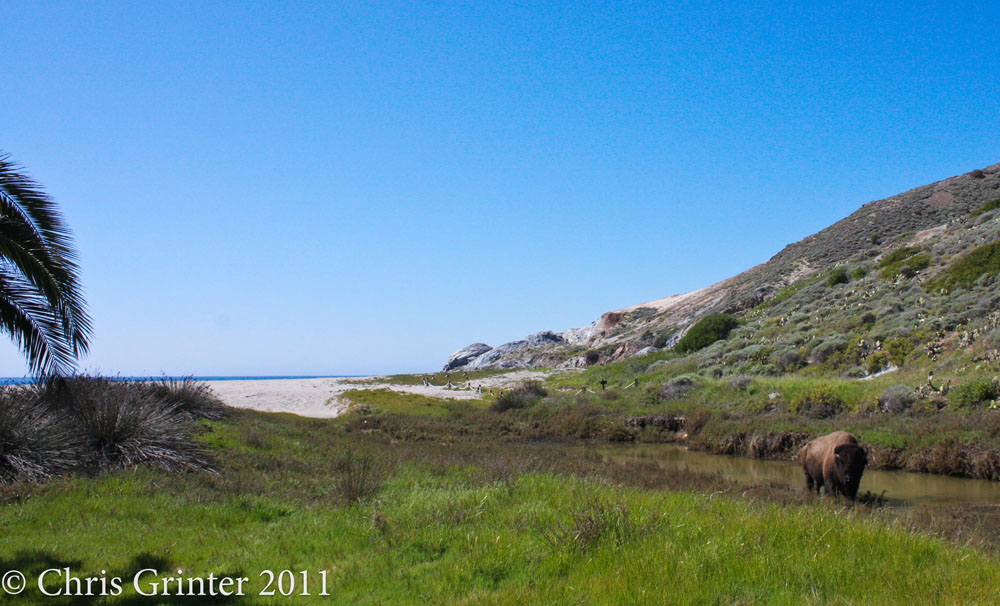
Morda je edini kraj na svetu, kjer lahko najdete ameriški bizon (vs. buffalo) stoji v bližini plaže zraven palmo. Teden na kraju Santa Catalina je čudovita eno, in kljub hladnem spomladi z nekaj unseasonable zmrzali, nekateri dostojno zbiranje je bilo storjeno. Here are just a few amusing images and you’ll notice one thing right away: no fields of wildflowers! As it turns out, almost a century of goat, pig and bison grazing has left mostly grass and cactus on the island. At one point there were over 1000 bison and countless herds of goats; it’s a wonder anything survived at all! danes, there are thankfully only a modest ~200 bison left that are even on birth control (you guessed it, you can’t shoot the damn things since people “love” them – just like the stupid eucalyptus you can’t cut down). V 1924 a small heard of bison were brought over to shoot the movie The Vanishing American. Seveda, the project went over budget, the scene was cut and the animals were let loose instead of paying to return them home. 80 years later and you’re left with an island you can only fight to “conserve” and not restore. Sad fact is that we have no clue what the island actually used to be like. It’s even hypothesized that the endemic island fox (of which we saw 6!) was brought over by indigenous peoples a few thousand years ago from neighboring islands. I guess it’s in our nature to mess with our environment.
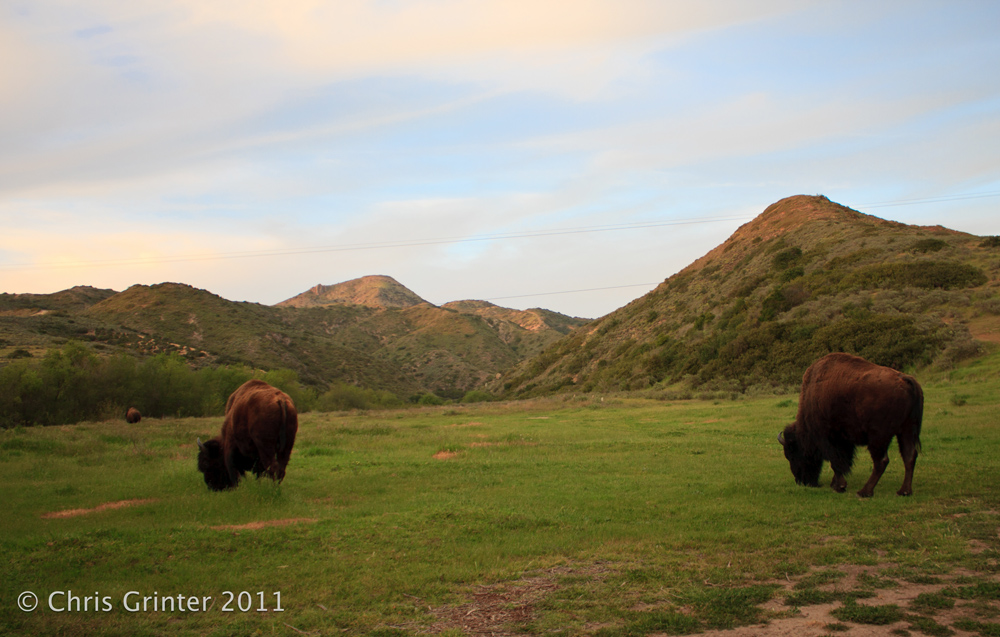
As I was photographing the above, this beast walked up behind me. It wasn’t running, I was!
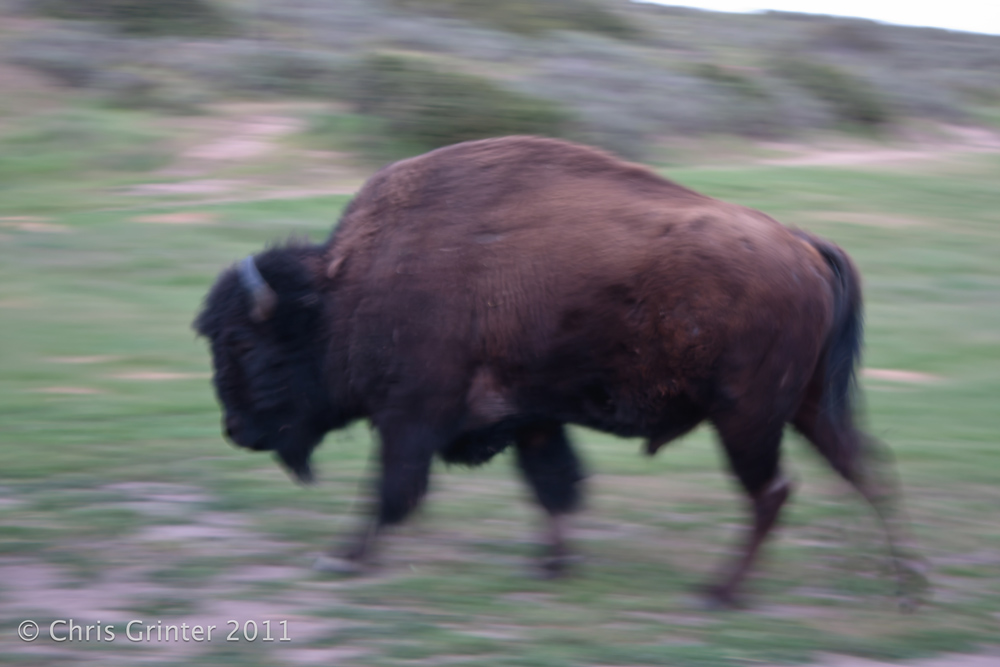
Chris Grinter, 8. marca, 2011 [cetsEmbedGmap src = http://maps.google.com / maps?ll = 33.393039, -118,416824&spn = 0.359452,0.715485&t = h&z = 11 width = 600 height = 330 marginwidth = 0 marginheight = 0 frameborder = 0 scrolling = auto]
Jutri zjutraj grem za 10 dan zbiranja pot navzdol Catalina Island. Bil sem srečo, da so povabljeni, da se pridružijo dr. Jerry Powell UC Berkeley na raziskavi moljev, in to bo moj prvič kateremkoli izmed otokov. Kanalski otoki so znani po svojih visokih stopenj endemizma, in nobena ni bolj znana kot Channel Island Fox. Obstajajo tudi peščica endemičnih metuljev, da bom v upanju, da bi našli, ampak vsaj vem, da je sezona alpskega cvetja in imam moj fotoaparat napolniti.
Jaz bom verjetno malo ali nimajo dostopa do interneta med bivanjem na otoku, tako da visijo tesno za teden dni. Sem vnaprej načrtovano bi jaz rednih delovnih mest oziroma gosta avtorja! Prosimo vas, ostanite z nami za nekaj mojih prvih slik 2011 Polje sezona.
Chris Grinter, dne 3. marca, 2011 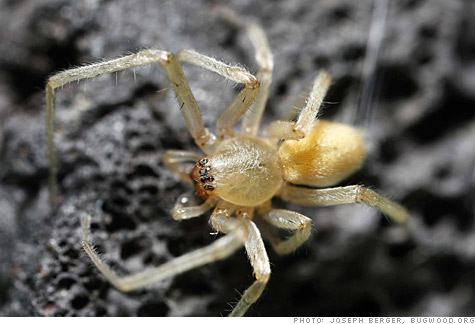
Očitno something in the Mazda 6 fuel line is warm and inviting for the yellow sac spider, enough so that they are building webs over the vent systems of the 4 cylinder vehicles (and not the 6!). The problem has been deemed a “spider infestation” by the car company, and the clogged vent lines then can lead to a cracked gas tank and the possibility of a fire.
“A certain type of spider may weave a web in the evaporative canister vent line and this may cause a restriction of the line”
So far only 20 cases are confirmed, but this problem is prolific enough that it has lead to a recall of over 52,000 sedans! I think it’s high time the major car companies hire entomology consultants – after all, my retainer would be a lot less than the cost of that recall…
I consulted with our resident team of arachnologists here at the Cas, and the above image does appear to be a sac spider. It’s too hard to tell from the image, but it’s probably not an egregious taxonomic failure.
|
Skepticizem
|














